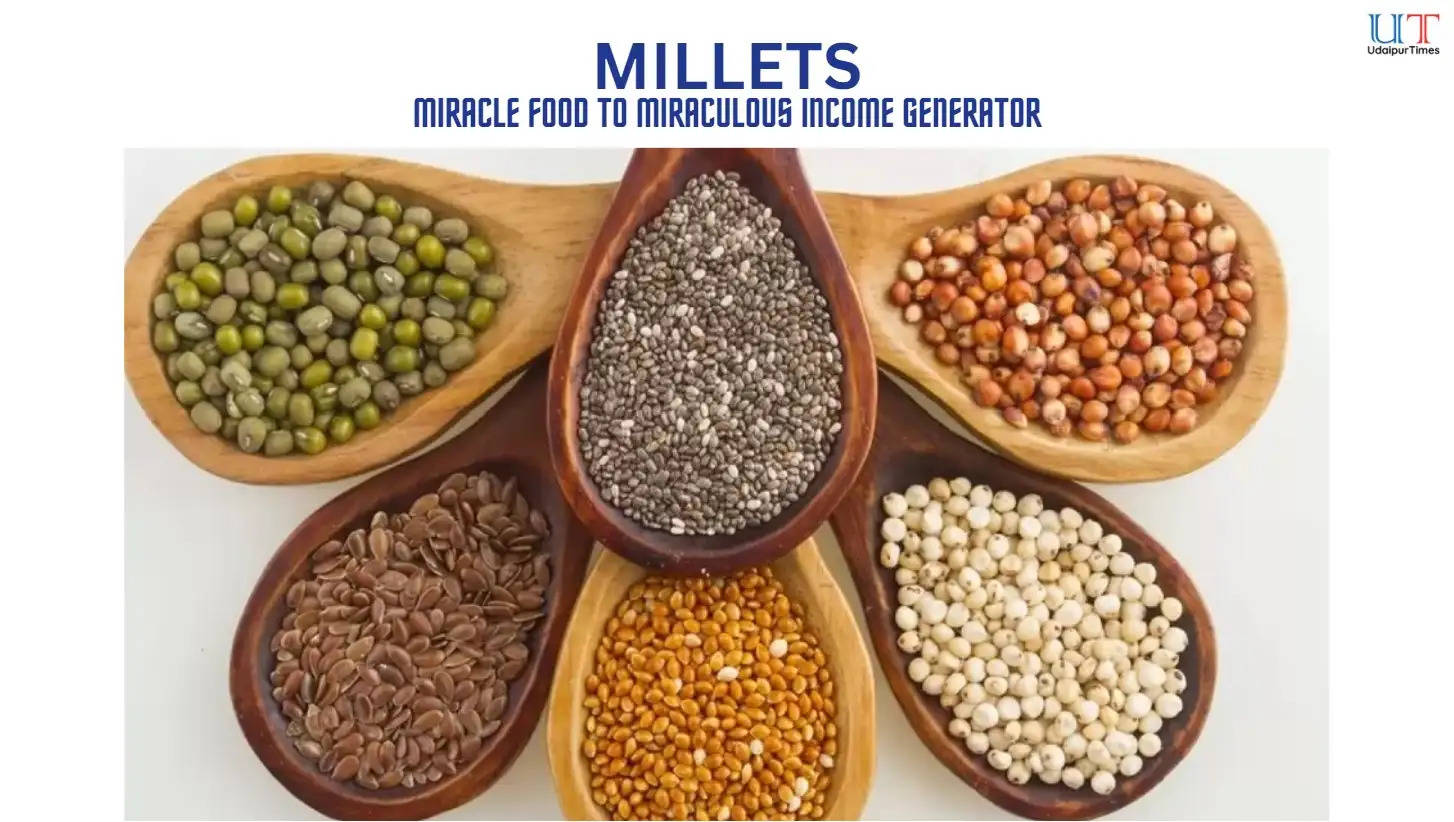Millets: Miracle Food to Miraculous Income Generation
Post by: Shreya Sangwan and Divya
United Nations, at the behest of the Government of India, declared 2023 the International Year Millets. Millets are the “MIRACLE FOOD OF THE FUTURE.”
Grown in India, Nigeria, and other Asian and African nations, millets are a family of small, spherical whole grains. Regarded as a traditional grain, they are utilised for feeding birds and cattle as well as for human consumption. Millets are perennial crop, which is cultivated globally but post-green revolution era, their cultivation has significantly declined due to more accentuation on rice, wheat and maize. Compared to other crops, they have several advantages, such as tolerance to pests and drought. In addition, they can endure in unforgiving conditions and on less productive soil.
Millets found in India are:
- Sorghum (Jowar)
- Pearl Millet (Bajra)
- Finger Millet (Ragi, Madua)
- Foxtail Millet (Kangni, Kakum)
- Little Millet (Kutki)
- Kodo Millet
- Proso Millet (Chenna)
- Barnyard Millet (Sanwa)
The most often produced type of Millet meant for human consumption is pearl millet. Nonetheless, the health advantages and high nutritional content of all varieties are well known. More necessary amino acids are found in millets than in most other cereals. These substances are the components that make up protein. Furthermore, among all cereal grains, finger millet has the highest calcium. Millets offer numerous long-term health advantages, including protection against cancer, heart disease, arthritis, diabetes inflammation, etc. Moreover they help combat environment issues by minimum water requirement, less fertile soils, and reduced use of pesticides and fertilizers.
Because of the marvelous nutritional qualities millets are being preferred and are replacing wheat and rice worldwide. A wide range of value added products is available in the market like cookies, pizza base, cakes, doughnuts, porridge, flakes, sweets, etc. This market has been phenomenal in employment generation for the rural people.
But did you know that apart from the seeds other plant parts can be a miraculous source of income? Yes right. The seeds are used as edibles but the leaves, stalk and husk can be utilized in various industries. In rural areas, the people mix millet residue in fodder to feed their cattle. Also the leftovers are used in mulching the fields. But industrially these are used to make acoustic ceilings and walls on a very large scale. Also bricks, concrete and even silver nanoparticles are being made. In agriculture sector, the hulls are used as mushroom growing medium. MSME’s can take initiative to set up enterprises to promote the utilization if millet residue so as to generate employment for rural people. As people are more drawn towards aesthetics nowadays, the dried stalks and leaves can also be used to make decorative items like candles, flower arrangements, etc. No wonder they can be also utilized by cosmetic industries.
It is just the starting of utilizing the millets. But apart from food industry, various other industries should carry out experiments and researches to explore the versatility of the miracle food. Number of value added products can be made in every sector so as to provide employment, promote enterprises to eventually earn miraculously.
Divya: PhD Scholar, Department of Biological Science, College of Basic Science and Humanities, GB Pant University of Agriculture and Technology, Pantnagar, Uttarakhand
To join us on Facebook Click Here and Subscribe to UdaipurTimes Broadcast channels on GoogleNews | Telegram | Signal



